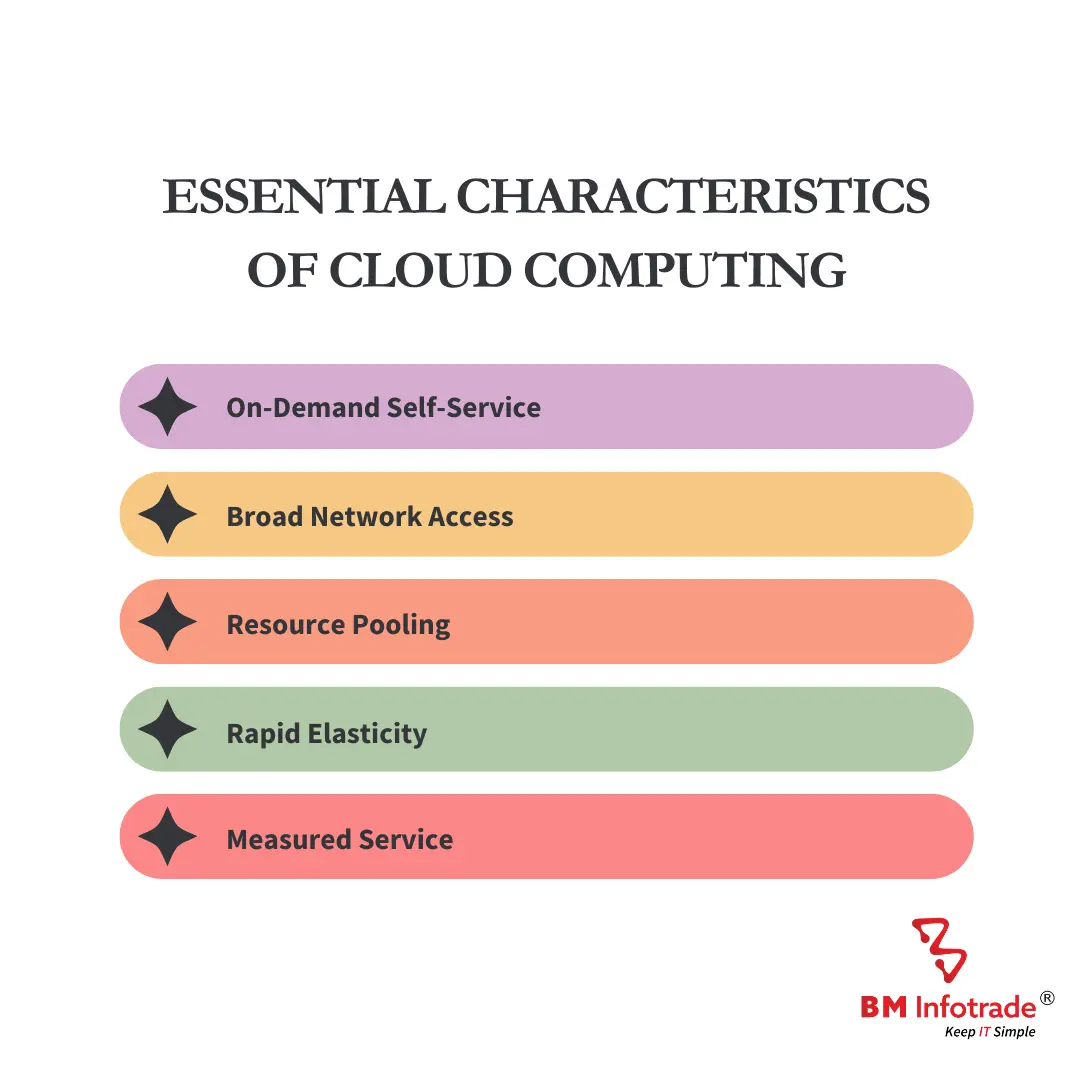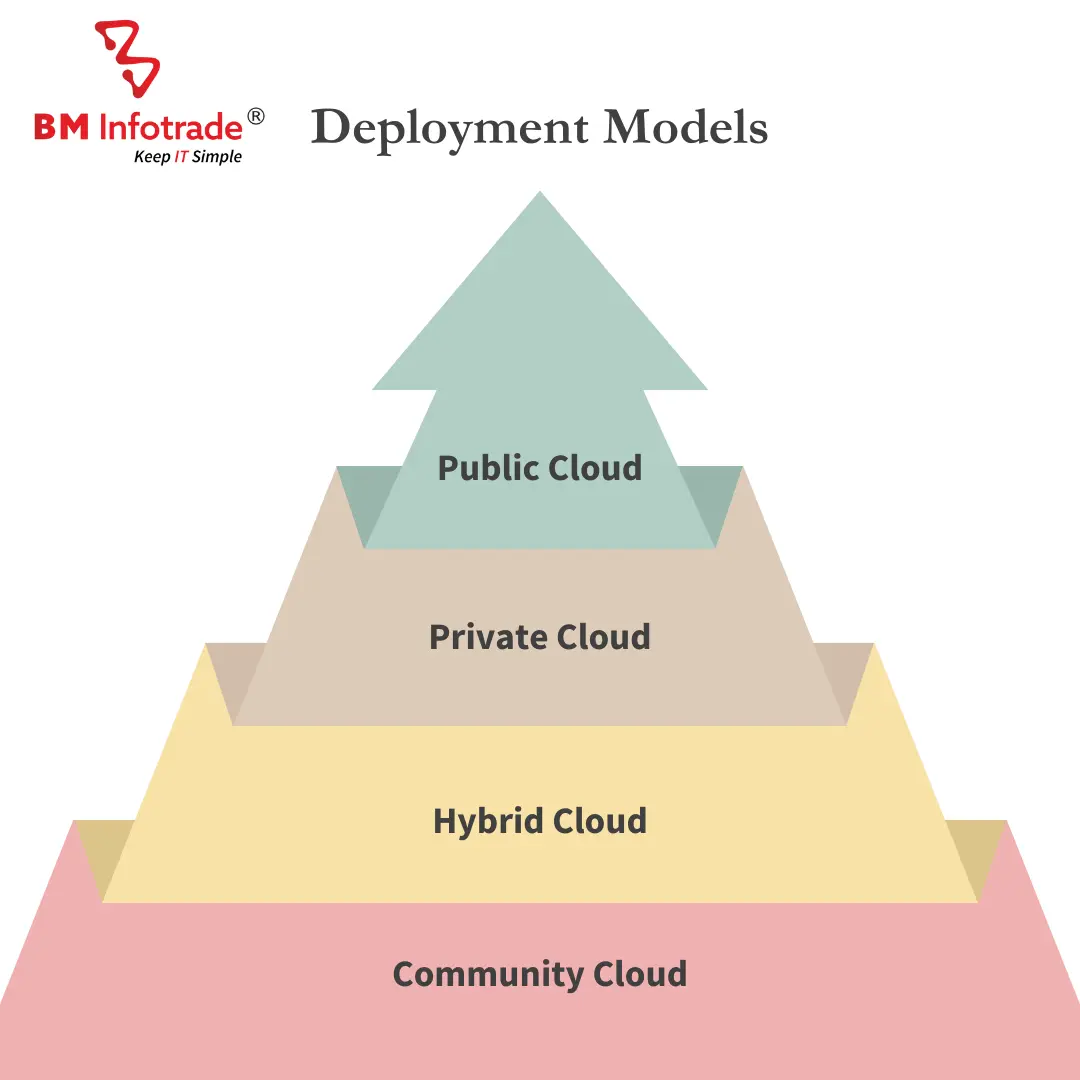Fundamental Characteristics of Cloud Computing
Cloud computing is a technology that allows users to access computer services over the internet, such as servers, databases, storage, networking, and software among others

Fundamental Characteristics of Cloud Computing
Table of Contents
Cloud computing is a technology that allows users to access computer services over the internet, such as servers, databases, storage, networking, and software among others. These services are provided on demand without any responsibility for the underlying infrastructure. Cloud service providers who maintain and operate this infrastructure in remote data centers usually offer such services.
The value of cloud computing has increased significantly in today’s digital world. It has changed how people use and consume technology to an extent. This is because it gives businesses scalability, flexibility, economy, and availability of computing resources. From tech start-ups to multinational firms, cloud computing plays a critical role in many industries that include but are not limited to healthcare finance education entertainment, and technology, therefore.
Essential Characteristics of Cloud Computing
Several characteristics of cloud computing distinguish it from traditional computing. These features together enhance the nimbleness, flexibility, and efficiency of the solutions that are provided through the cloud.

On-Demand Self-Service:-
Cloud computing has on-demand self-service which allows users to get their computing resources including virtual machines, storage, or applications without any human interaction from a service provider. Automated interfaces allow for user access and resource deployment as needed thereby decreasing time and effort involved in the provisioning and management of resources.
Broad Network Access:-
Cloud services can be accessed over the internet using various devices such as desktop computers, laptops, smartphones, and tablets among others. The pervasiveness of this access means that consumers always have an opportunity to interact with data held in cloud-based apps regardless of their location so long as they can connect to it via an internet connection supporting cooperation, mobility, and flexibility.
Resource Pooling:-
Cloud computing uses resource pooling to boost the optimization of resource efficiency and utilization. The resources like processing, storage, and networking capacity are aggregated into a single multi-tenancy environment that can be dynamically assigned based on changing needs. In turn, this model of shared resources allows the consumers of cloud-based services to save costs but still achieve scalability and elasticity.
Rapid Elasticity:-
The ability to scale up or scale down resources in response to workload variations is another characteristic of cloud environments, which is referred to as “rapid elasticity”. This ensures that consumers of cloud services can deal with conflicts about their real-time usage to ensure they perform well and cost-effectively use those resources available to them. It also provides automated scaling techniques and variable pricing models for additional scalability and agility for cloud implementations.
Measured Service:-
Most Cloud computing services have options where users pay per use or subscribe every month thereby paying based on what they utilize from the system. Providers also monitor consumption patterns by customers who pay for what they use transparently including billing as well as how much they consume at any given time within a specific contract period – counted in days, weeks, or months. As such it promotes better control over costs through accountability transparency while optimizing this resource use so that maximum returns are achieved from expenditure incurred here.
Read More:- What is Platform-as-a-Service (PaaS)?
Service Models
Cloud computing offers different service models that address various levels of abstraction and management responsibilities. These service models outline the type of services provided by cloud providers as well as the extent of control or customization allowed to users.
Infrastructure as a Service (IaaS):-
Infrastructure as a Service (IaaS) is responsible for managing basic computer resources that are availed over the internet including virtual servers, storage, and networking infrastructure. On the other hand, IaaS allows users to take charge of operating systems, applications, and development frameworks which let them deploy and manage virtualized infrastructures whenever they want to. Examples of IaaS providers include Amazon Web Services (AWS) EC2, Microsoft Azure Virtual Machines, and Google Cloud Compute Engine.
Platform as a Service (PaaS):-
Platform as a Service (PaaS) aims at higher-level abstractions by provisioning online development and deployment environments for applications.PaaS platforms are usually made up of tools, middleware, and runtime environments that ease application development, testing, and deployment. Users can focus on application building and management without caring about underlying infrastructure management. Popular PaaS offerings include Google App Engine, Microsoft Azure App Service, and Heroku among others.
Software as a Service (SaaS):-
Software as a Service (SaaS) constitutes software applications delivered via the Internet on a rental basis. SaaS-based programs are operated and supported by the vendor so that users can access them through browsers or APIs without installing them locally. Typical SaaS offerings cover email, collaboration tools, customer relationship management (CRM), enterprise resource planning (ERP) software etcetera. Some examples of SaaS providers are Salesforce, Google Workspace, Microsoft Office 365, and Dropbox.
Other Service Models
Other than those mentioned above, cloud computing also has other service types that cater to different cases and requirements in the field such as the:
Function as a Service (FaaS): Another term for serverless computing is Function as a service whereby individual functions or snippets of code can be deployed in response to events while not managing server infrastructure.
Container-as-a-Service (CaaS): This is where CaaS services come into play; they provide container orchestration and management platforms that allow you to deploy, scale, and manage containerized applications effectively.
All our services have their own set of benefits and trade-offs in terms of control, flexibility, and governance costs for organizations involved in it.
Read More:- What is Infrastructure as a Service / IaaS? A smarter way
Deployment Models
Cloud computing can support different deployment models that determine the way cloud resources are provisioned, managed, and accessed. Therefore, these deployment models offer varying levels of control, security, and customization options so that organizations can tailor their cloud environments in a way to meets specific requirements and preferences.

Public Cloud
Public cloud deployment is the delivery of cloud resources and services over the internet by third-party cloud service providers (CSPs). Many institutions share infrastructures in public clouds as they enjoy economies of scale and it becomes economical to them. Various cases and applications can be deployed across public clouds because they are scalable, flexible, and accessible. Some examples of public cloud providers are AWS, Microsoft Azure, Google Cloud Platform, and IBM Cloud.
Private Cloud
In private cloud deployment mode, an organization sets up its own data centers or private hosting environments to provide cloud infrastructure and services. Private clouds on the other hand are solely dedicated for use by one organization giving more control over the system’s security features than those available for a public one. For instance, private clouds are ideal for companies operating under strict compliance regulations as well as ones who want to.
Hybrid Cloud
Hybrid cloud deployment involves mixing elements of public and private clouds, permitting businesses to exploit the best aspects of both models. In a hybrid cloud environment, workloads as well as data can be allocated dynamically between public and private cloud infrastructure considering factors such as performance, security, compliance, and cost. Hybrid clouds offer flexibility, scalability, and interoperability that allow businesses to optimize resource utilization and respond effectively to changing business needs.
Community Cloud
Community cloud deployment entails several organizations sharing cloud infrastructure and services due to common interests like industry-specific regulations compliance requirements or security standards. Community clouds are designed for specific communities or user groups where resource management, governance, and shared facilities are involved. By pooling resources and expertise together, community clouds encourage cooperation, mutual investment in costs, and knowledge transfer among the participating enterprises.
Read More: Understanding Cloud Networking: The Future of IT Infrastructure
Conclusion
In conclusion, cloud computing has become a transformative power in the field of IT infrastructure and digital innovation. Cloud computing on the other hand has revolutionized how organizations can access, utilize, and manage computer resources through its intrinsic characteristics of scalability, flexibility, and low cost. The various service models, deployment options, and benefits of cloud computing provide organizations with countless opportunities to enhance efficiency; change direction quickly; or be creative in their operations as well as applications.
However, security and compliance are some of the challenges that come with cloud adoption which have to be looked into carefully to maximize the advantages of cloud technology. Onward future trends and innovations such as edge computing, serverless architecture, AI/ML integration, quantum computing, etc., will significantly contribute to a faster development pace of cloud computing thus opening up new possibilities for different industries within the economy. Through these trends and proper use of cloud technology organizations can position themselves strategically for success in the coming era of digitalization.







Anshul Goyal
Group BDM at B M Infotrade | 11+ years Experience | Business Consultancy | Providing solutions in Cyber Security, Data Analytics, Cloud Computing, Digitization, Data and AI | IT Sales Leader